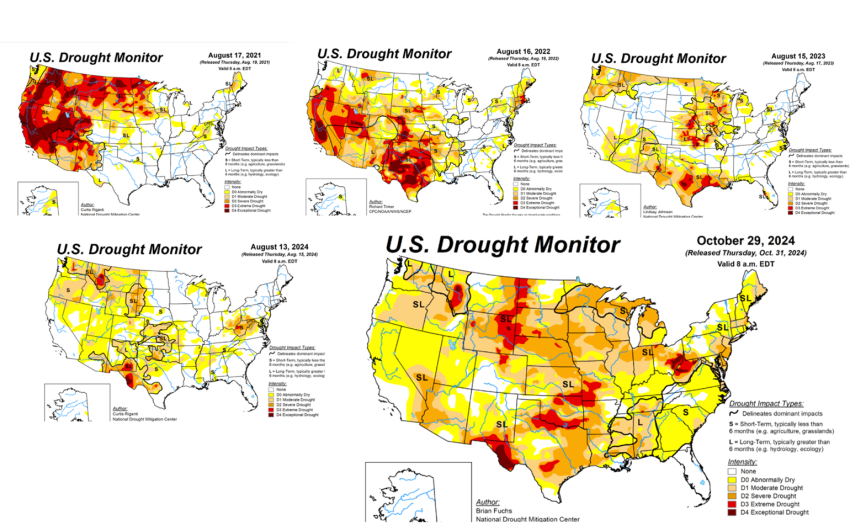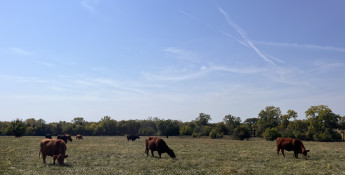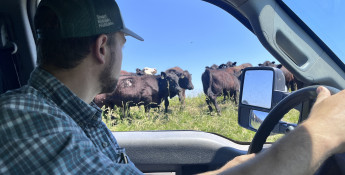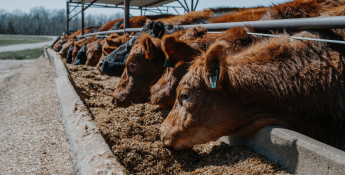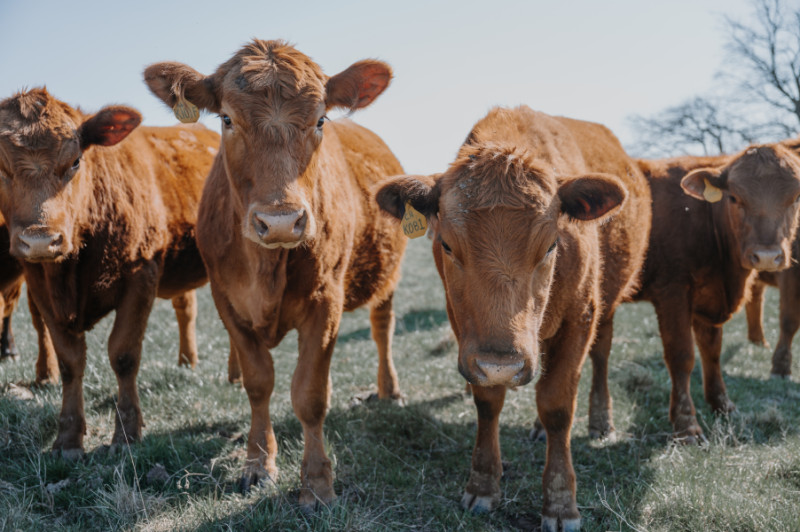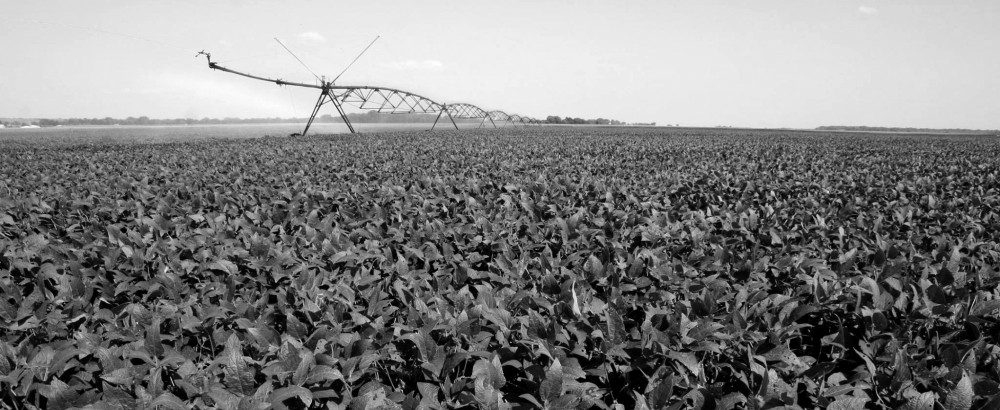By Brandi Buzzard on August 26, 2025
High Beef Prices Explained: The Real Reasons Ranchers Aren’t to Blame
What does "Crazy Eights" have to do with beef prices? Find out!
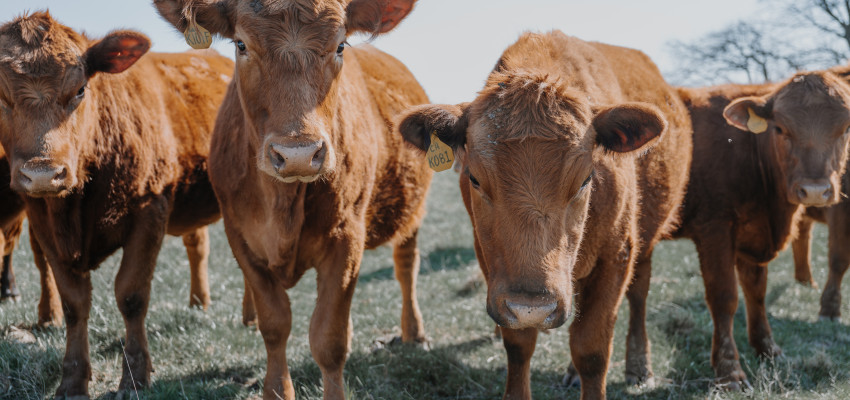
I vividly remember playing the card game “Crazy Eights” with my dad and brother when I was little. I don’t recall winning very much, but I do remember the chaos that ensued when an eight was played and foiled a player’s plans to win. Why is this relevant?
Because just this morning, I read that ground beef has hit all-time highs at the grocery store — $8 per pound — and there is no shortage of chaos in the beef industry currently. This historic price is the latest peak in almost two years as prices have climbed higher and higher. While you may hear disgruntled shoppers, shocked ranchers or TV analysts blame — or credit —— a single factor leading to today’s beef prices, it would be foolhardy to simplify such a complex occurrence.
So, let’s break it down into what I believe are the three major drivers of high beef prices in 2025.
1. Drought
First on the docket is drought. Some level of drought occurs in the U.S. every year, but not always in the same place. Rather than attempt to explain this pattern, I’ve provided this series of graphs from the U.S. Drought Monitor from the past several years, which shows drought has been a constant factor affecting farms and ranches.
As you can see, drought patterns rotate and vary in intensity but there is almost always a drought in some (or all) of cattle country. For reference, the top 10 states in terms of cow herd numbers are Texas, Oklahoma, Missouri, Nebraska, South Dakota, Montana, Kansas, North Dakota, Kentucky and Florida. Last October, nearly every part of the U.S. experienced drought to some extent.
Why does prolonged drought in one or more of those states matter? Simply put, without moisture, grass won’t grow and without grass —— and the subsequent hay to feed cows in the winter —— keeping a farm or ranch in the black is difficult. During drought, buying hay can break the bank so to offset feed and operating costs, some producers will choose to sell some or all their cows. If there is no demand for those cows to join another producer’s herd, they will go into the beef supply. This leads to fewer cows to produce calves, which leads to fewer cattle in the supply chain and ultimately, higher prices for the beef on the shelf. Right now, the beef industry has its lowest cow inventory in 70 years. There are dramatically fewer mature cows on farms and ranches to have calves for eventual beef, as they have been sold in various periods of drought. As the national cow herd shrinks, there are fewer calves for beef and calf prices increase to historic levels.
2. Beef Prices
Which brings me to the next factor: beef prices.
How can high beef prices contribute to even higher beef prices?
Imagine you have 100 widgets. Currently, widget prices are the highest they have been in our lifetime. You can choose to sell your 100 widgets for record prices or keep them and utilize them to make more widgets. But remember, production costs are also high and there isn’t a clear end date for when prices will crash. What do you do? Hint: this isn’t about widgets.
It's about heifer retention and herd rebuilding. At present, producers can go in two directions with their heifer calves. They can keep them at weaning and integrate them into their herds as cows to have calves, which will eventually go into the beef supply. This process is heifer retention, and it leads to herd rebuilding on a larger scale. When nationwide herd rebuilding starts, historically high beef prices will eventually end as supply catches up to demand.
On the flip, it’s hard to pass up these prices. For reference, in August 2022, at our local auction market, a set of 660-lb calves sold for $1,193 per head. Fast-forward to August 2025, at the same auction market, where a set of 660-lb calves sold for $2,772 per head. That’s almost a 250 percent increase in price and who could blame someone capitalizing on that kind of income?
However, by selling those heifer calves instead of keeping them in the herd, the beef supply remains constant and rebuilding the herd is pushed further out. Keep in mind that a cow’s gestation length is nine months and after calving, another 18 months for that calf to be in the beef supply. If meaningful herd rebuilding started in summer 2025, those heifers would breed in summer 2026, calve in spring 2027 and the resulting beef from those calves would reach meat cases sometime in fall or early winter 2028-29. So, as you can see, it can take a while for the pendulum to swing back and the incentive to sell has never been as strong as it is right now.
3. New World Screwworm
Now, the thorn that won’t go away — the New World screwworm. A disastrous and harmful pest, New World screwworm larvae burrow into the flesh of live animals and essentially eat them alive. They can infest livestock, pets and wildlife and are extremely hard to contain. The U.S. essentially eradicated them using sterile screwworm flies in the 1960s and have not had to worry about them much since then. However, the pest is moving northward from Central America through Mexico after breaching the Darién Gap and despite extensive, orchestrated efforts to stop the movement, cases of infestation are drawing ever closer to the southern U.S. border.
Due to the threat to cattle and our abundant food supply, the U.S. has ceased all cattle imports from Mexico and is heavily investing in sterile screwworm fly production facilities. The absence of those live cattle, which typically go into southern feedyards, has contributed to price increases as there are fewer cattle available for feedyards in an already tight cattle supply.
There are no known cases of New World screwworm in cattle in the U.S., and I want to make sure readers and consumers know farmers and ranchers are doing their very best to prepare for a possible event in the U.S. by making sure facilities and management practices are in place to provide the best care for their herds.
As with all global supply chains, nuance should be considered as well as the complexity of the beef industry. I hope this discussion has shed light on some of the biggest factors affecting ranchers today when it comes to our livelihoods and as always, I welcome any questions or comments via my social media properties.

